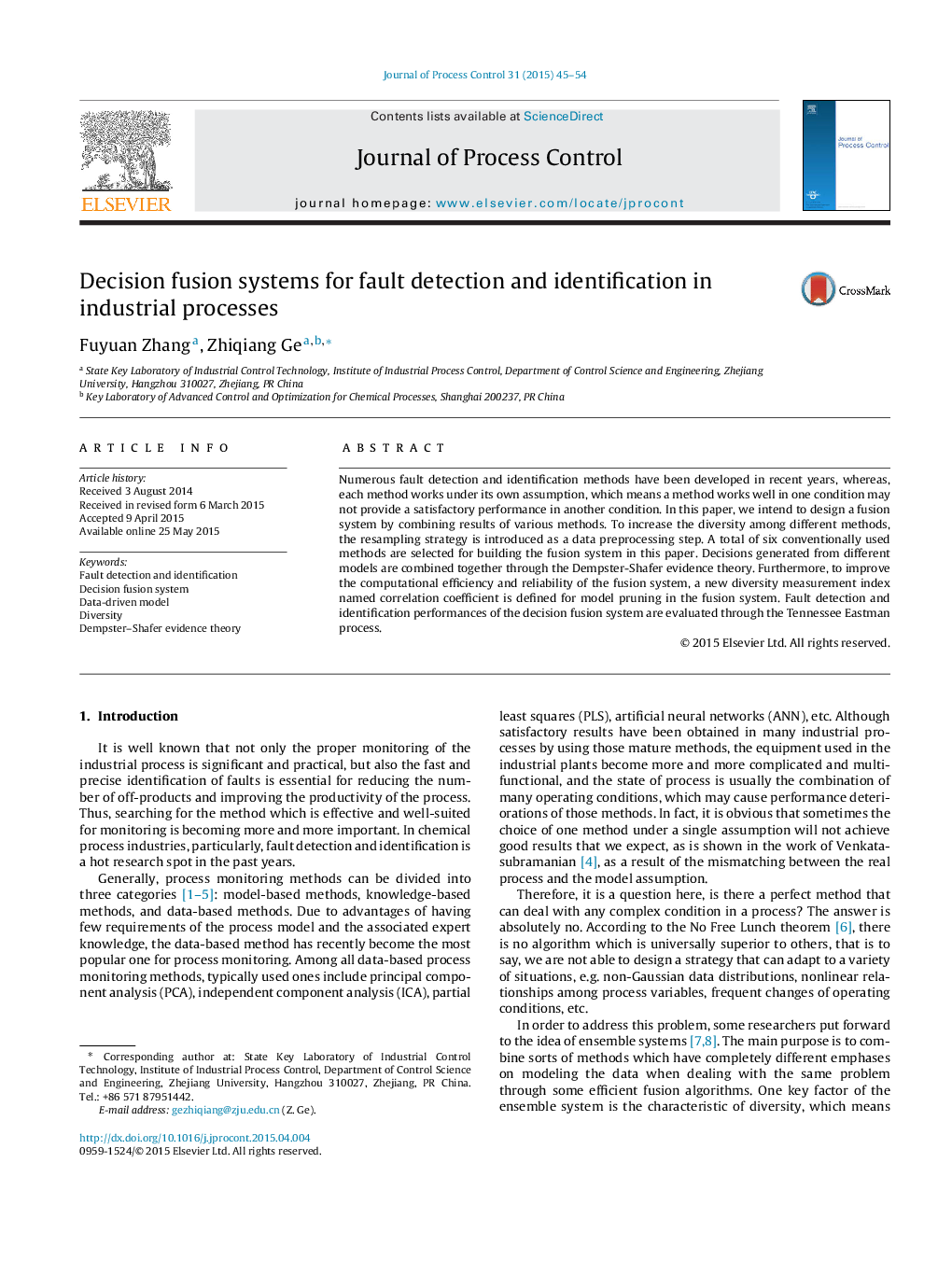| کد مقاله | کد نشریه | سال انتشار | مقاله انگلیسی | نسخه تمام متن |
|---|---|---|---|---|
| 688793 | 1460372 | 2015 | 10 صفحه PDF | دانلود رایگان |
• Decision fusion systems have been constructed for fault detection and identification.
• Resampling strategy is introduced in improve the diversity of classifiers.
• Dempster–Shafer evidence theory is used for results combination from different classifiers.
• Case study of the TE benchmark process is designed to illustrate the superiority of the new systems.
Numerous fault detection and identification methods have been developed in recent years, whereas, each method works under its own assumption, which means a method works well in one condition may not provide a satisfactory performance in another condition. In this paper, we intend to design a fusion system by combining results of various methods. To increase the diversity among different methods, the resampling strategy is introduced as a data preprocessing step. A total of six conventionally used methods are selected for building the fusion system in this paper. Decisions generated from different models are combined together through the Dempster-Shafer evidence theory. Furthermore, to improve the computational efficiency and reliability of the fusion system, a new diversity measurement index named correlation coefficient is defined for model pruning in the fusion system. Fault detection and identification performances of the decision fusion system are evaluated through the Tennessee Eastman process.
Journal: Journal of Process Control - Volume 31, July 2015, Pages 45–54
